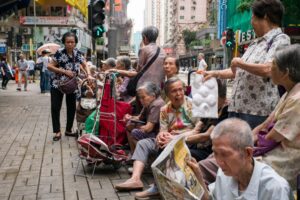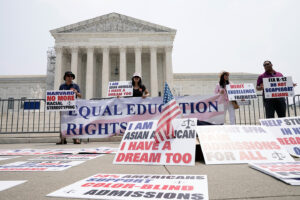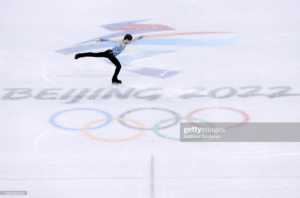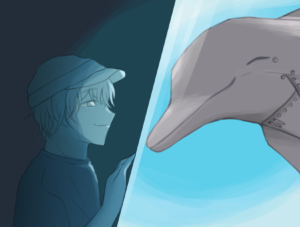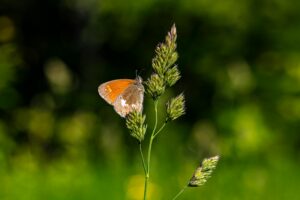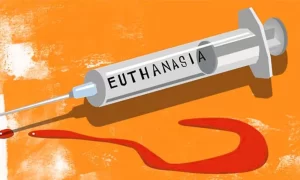Throughout history, walls have played significant roles in human society. While the Great Wall of China defended Chinese empires from nomadic invaders since the 7th century BCE, the Berlin Wall split Berlin into two from 1961 to 1989. Making waves more recently were Trump’s controversial walls, or the extension of the Mexico-United States barrier. However, a wall that is just as important, though rarely discussed, is the one and only Great Green Wall.
The Great Green Wall (GGW) is a Pan-African initiative implemented to restore and sustainably manage land in the Sahel region, or the part of Africa between the Sahara in the north and the savannahs in the south. Described by some as the world’s most ambitious reforestation project, it was conceived in 2007 by the African Union, with initial plans of it being a 7,000 km long and 16 km wide wall of trees that bisected a dozen countries.
In 2010, the Sahel countries formed the Pan-African Agency of the GGW (PA-GGW) to work on implementing the GGW in the official GGW member states. The ultimate aim was to rehabilitate 100 million hectares of presently degraded land, create 10 million jobs in rural regions and capture 250 million tonnes of carbon from the atmosphere, all by 2030. The GGW would improve livelihoods in one of the poorest regions in the world by tackling the interlinked issues of desertification and poverty.
Desertification affects Africa the greatest out of all the continents. It is the process of land becoming desert as soil quality worsens over time. It can be caused by over-cultivation, climate change and deforestation. When trees are cut down, the topsoil is exposed and easily blown away by strong winds, which increases the rate at which rainfall runs off the land instead of soaking into the ground. This soil erosion leads to less suitable land for farming, food scarcity, and expanding deserts. Deforestation has been the main factor behind Africa’s desertification; with about 45% of the continent’s land area affected by this type of land degradation, desertification has even been described as a “spreading cancer” by Abdoulaye Wade, the former president of Senegal.
The effects of desertification include falling crop yields, food scarcity, a loss of income for farmers, and forced migration. Rainfall was already low and droughts were already frequent, but with more infertile land, millions of Africans are predicted to migrate from degraded regions of Africans in the next 20 years. Meanwhile, the population of the Sahel is set to increase from 135 million today, to 340 million by 2050. When all these factors are combined, they will eventually result in widespread poverty.
Despite the noble aim of ending both desertification and poverty, the efficacy of building walls of trees was immediately questioned once the GGW was announced. Dennis Garrity, a senior research fellow at the World Agroforestry Centre, declared that “this was a stupid way of restoring land in the Sahel”. There was not a lot of scientific evidence suggesting the GGW would work, nor was there enough funding for such a massive project. In addition, large areas of the wall were in unpopulated regions, which meant nobody would be there to take care of the saplings.
Since then, the Great Green Wall has become less about planting a forest but more about focusing on indigenous land use methods, including the restoration of natural vegetation, water conservation and sustainable dryland management. Mohamed Bakarr, the lead environmental specialist for Global Environment Facility, said the concept of the Great Green Wall had become more practical, and that “it is not necessarily a physical wall, but rather a mosaic of land use practices that ultimately will meet the expectations of a wall.”
By 2020, the Great Green Wall had several impressive achievements. Over 350,000 jobs had been created, the majority of which were in the production and sales of non-timber forest products. The wall had generated 90 million USD and restored 18 million hectares of land. Certain countries had done particularly well, especially Ethiopia, which had ostensibly planted 5.5 billion seedlings on around 943,000 hectares of land. If the GGW reaches its 2030 targets, it is estimated that by then, restored areas will be able to sequester 256 and 57 metric tons of CO2 through the forests and the soil respectively (carbon sequestration is the capture of carbon dioxide from the atmosphere, slowing atmospheric CO2 pollution and global warming).
However, recent announcements decrease the likelihood of the Great Green Wall being completed in just eight years. Only 4 million hectares of degraded land have been restored in the last decade, meaning only 4% of the wall’s target area within the program’s “strict intervention zones” has been completed. Many countries have planted several million trees already, but due to their physical landscapes, level of economic development and/or the governance of their country, they are behind schedule.
One such country is Djibouti, which is located in the Horn of Africa and naturally has a warm, arid climate throughout the year. Daily temperatures are usually between 32 and 41ºC, resulting in only 90 hectares of land having been restored. This is in stark contrast to the 151,448 hectares of land restored in Ethiopia, which has a daily maximum temperature of 25ºC.
Another challenge that countries in the Sahel face is poor governance in terms of environmental policies. There is an absence of widespread political support for environmental policy agenda in less developed countries, as they tend to prioritise economic development over preserving nature. Confusing and unorganised procedures for the initiation of environmental programmes also hinder progress in environmental conservation.
Finally, countries also struggle with the monitoring of such an ambitious scheme. The level of environmental project monitoring and reporting has risen within these past few years, which has overwhelmed many of the poorer countries in the GGW area. According to Salwa Bahbah, a business and research analyst, researchers struggled to investigate the success of the GGW because “there is not a good monitoring and evaluation system in place.” As a result, it remains unclear “where the money goes exactly and how it is used.” Countries report their own progress, but there is speculation that not all of Senegal’s 12 million seedlings, for example, have actually survived.
In order for the GGW to meet its 2030 objective, more than 8 million hectares will have to be restored every year. Though it sounds impossible, several methods have been suggested to speed up this project. Improving the administration of the GGW and ensuring there is high-level political support from every country involved will allow the GGW to move forward. Advocacy and raising awareness globally will also help; a documentary titled “The Great Green Wall” was released in 2019, as part of a successful United Nations Convention to Combat Desertification (UNCCD) publicity campaign.
But perhaps the most crucial step that needs to be taken is for the GGW to obtain enough funding so it can continue. Of course, the Covid-19 pandemic will persuade many investors to withdraw their funding for the GGW. The UN deputy secretary-general, Amina Mohammed, requested that investors do exactly the opposite, saying “How we respond today will shape the lives and livelihoods of individuals and communities for generations to come.”
Ibrahim Thiaw, executive secretary of the UNCCD, agreed and proclaimed that “Financing income-generating activities linked to the land, typically the main asset the poorest people have, is perhaps, the most cost-effective way to pursue peace, security, development and good health”.
Though Africa’s Great Green Wall may not be as publicised as Trump’s wall, or as politically significant as the Berlin Wall, in time the GGW will become just as prominent. Walls have historically been built to protect people by keeping them in or out of an area, but the Great Green Wall may very well be the first of many to protect people by primarily protecting the environment.
Article written by Ady Lam





